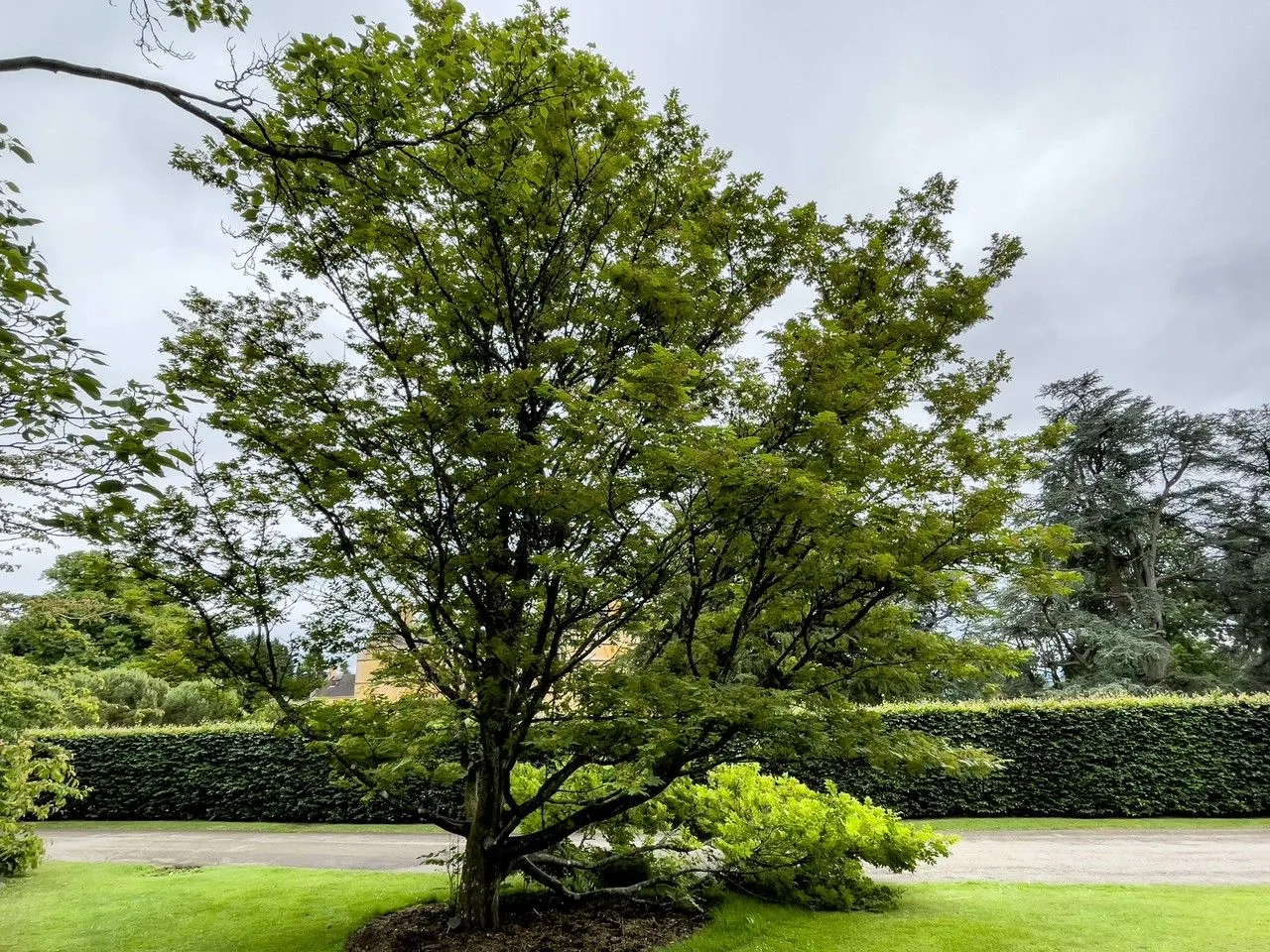
Author: (D.Don) Benn.
Bibliography: Pl. Jav. Rar.: 198 (1844)
Year: 1844
Status: accepted
Rank: species
Genus: Picrasma
Vegetable: False
Observations: Himalaya to Temp. E. Asia
Nigaki, known scientifically as Picrasma quassioides, is a notable plant species belonging to the Simaroubaceae family. First detailed in the botanical work “Pl. Jav. Rar.” in 1844, the documentation of this plant dates back to an era when botanical exploration was expanding into new regions. The species has been attributed to the author (D.Don) Benn., acknowledging their contribution to its classification.
Nigaki is naturally distributed across a broad geographical range, extending from the Himalayan regions to the temperate zones of East Asia. This versatility in habitat highlights its adaptability and robustness in varying climatic conditions. The presence of Nigaki in such a wide array of environments underscores its ecological significance and the diverse conditions under which it can thrive.
The Simaroubaceae family, to which Nigaki belongs, is characterized by its members’ distinctive properties and uses. Plants in this family are often recognized for their medicinal and economic value, and Nigaki is no exception. Although specific traditional uses and potential benefits of Picrasma quassioides were not detailed in the provided information, plants in the Simaroubaceae family generally have important roles in traditional medicine and are valued for their unique phytochemical compositions.
Overall, Nigaki’s presence from the Himalayas to temperate East Asia and its classification within the Simaroubaceae family make it a plant of considerable interest both botanically and ecologically. Further exploration and study would likely reveal more about its specific roles and applications within its native habitats and beyond.
Eng: nigaki, shurni
En: Nigaki, Shurni
Taken Sep 28, 2020 by Diego Alex (cc-by-sa)
Taken Jun 24, 2021 by Andrew Gagg (cc-by-sa)
Taken Aug 20, 2017 by Royal Botanic Garden Edinburgh – Anonymous (cc-by-nc)
Taken Aug 20, 2017 by Royal Botanic Garden Edinburgh – Anonymous (cc-by-nc)
Taken Aug 20, 2017 by Royal Botanic Garden Edinburgh – Anonymous (cc-by-nc)
Taken Aug 20, 2017 by Royal Botanic Garden Edinburgh – Anonymous (cc-by-nc)
Taken Jun 24, 2021 by Andrew Gagg (cc-by-sa)
Taken Sep 28, 2020 by Diego Alex (cc-by-sa)
Taken Jun 24, 2021 by Andrew Gagg (cc-by-sa)
Taken Jun 24, 2021 by Andrew Gagg (cc-by-sa)
© copyright of the Board of Trustees of the Royal Botanic Gardens, Kew.
© copyright of the Board of Trustees of the Royal Botanic Gardens, Kew.
© copyright of the Board of Trustees of the Royal Botanic Gardens, Kew.
Family: Myrtaceae Author: (F.Muell.) K.D.Hill & L.A.S.Johnson Bibliography: Telopea 6: 402 (1995) Year: 1995 Status:…
Family: Rubiaceae Author: Pierre ex A.Froehner Bibliography: Notizbl. Bot. Gart. Berlin-Dahlem 1: 237 (1897) Year:…
Family: Sapindaceae Author: Koidz. Bibliography: J. Coll. Sci. Imp. Univ. Tokyo 32(1): 38 (1911) Year:…
Family: Asteraceae Author: A.Gray Bibliography: Pacif. Railr. Rep.: 107 (1857) Year: 1857 Status: accepted Rank:…
Family: Fabaceae Author: Medik. Bibliography: Vorles. Churpfälz. Phys.-Ökon. Ges. 2: 398 (1787) Year: 1787 Status:…
Family: Aspleniaceae Author: (Cav.) Alston Bibliography: Bull. Misc. Inform. Kew 1932: 309 (1932) Year: 1932…